Mastering the Art of Pour-Over Coffee
At its core, this method celebrates precision and patience, offering you a deeper connection to your morning ritual. Start by selecting your favorite coffee beans, finely ground to resemble sea salt. As you pour hot water over the grounds, witness how the coffee blooms, releasing aromatic notes that hint at the flavors to come. Balancing the water-to-coffee ratio is crucial here, as it can dramatically alter the taste. Through experimentation, you'll uncover the ideal pour-over coffee ratio that suits your palate.
Comparing pour-over coffee vs French press reveals distinct experiences; while both are revered brewing methods, pour-over offers a cleaner taste profile with its paper filter capturing oils and sediments. Mastering this brew requires your attention to detail—a gentle stream of hot water, a steady hand, and an appreciation for the nuances in each sip. This method allows you to indulge in coffee's subtleties, making your daily cup a crafted masterpiece.
Understanding the Pour Over Method
The pour-over method invites you to be part of an age-old coffee brewing tradition that emphasizes technique and quality. At its heart, this method transforms coffee-making into an art form, with the water's temperature, the grind size, and your pouring technique all playing critical roles in the final brew's flavor. When you pour hot water over the coffee grounds, you engage in a delicate dance that can bring out a range of flavors from the beans.
Pouring technique is integral, as the water should be added in a slow, circular motion, evenly saturating the grounds to unleash a uniform flavor profile. To enhance your pour-over experience, try experimenting with the pour-over coffee ratio, adjusting the quantity of water and grounds to reveal distinct taste profiles. This meticulous approach allows you an intimate familiarity with your coffee's character, turning each cup into an individualized experience.
The use of paper filters in pour-over processes gives it a noticeable quality. The filter successfully removes coffee oils and sediment, resulting in a cleaner and brighter cup. To enhance your coffee adventure, consider using freshly ground beans to make the most of the pour-over method. Freshness can significantly impact the depth and breadth of flavors in your coffee.

The Perfect Pour Over Recipe
Crafting the perfect pour-over coffee starts with precision and quality ingredients. Begin by selecting premium coffee beans and grind them to a medium-coarse texture, reminiscent of sea salt. Heat your water to just below boiling, around 200°F, to ensure optimal extraction. The role of water can't be understated in this process—it serves as the conduit that coaxes the rich flavors from the grounds into your cup.
The pour-over coffee ratio is crucial; a standard ratio is roughly 1:16, using one part coffee to 16 parts water to balance strength with flavor. Blooming is a key step where you wet the grounds just enough to release trapped gases, enhancing the subsequent brewing stage. This practice is essential for achieving an even extraction and highlights the transformative nature of this method.
Looking at pour-over coffee through the lens of simplicity, it becomes clear that the method’s elegance lies in its details. With each controlled pour, you weave your own touch into the final flavor.

Step by Step Pour Over Brewing Guide
Begin your pour-over journey by setting a solid foundation with the right equipment: a cone dripper, filter, freshly ground coffee, and a gooseneck kettle. Position a filter in the dripper and rinse it with hot water to eliminate any paper taste and preheat your vessel. Weigh out your coffee to ensure precision, sticking to your desired pour-over coffee ratio.
Next, bring your water to a precise temperature of about 200°F. Add the coffee grounds to the dripper, creating a small divot in the center. Start with a gentle pour, saturating the grounds evenly. This blooming phase is crucial, as it allows gases to escape, unlocking more flavor. This step lays the foundation for a full-bodied brew.
Following step-by-step guidance and utilizing expert techniques allows you to harness the power of refined coffee brewing methods, creating a sensory experience that captures the essence of each bean and transforms your daily ritual.

Common Mistakes to Avoid
Achieving the perfect pour-over coffee requires understanding and avoiding common missteps. One frequent mistake is improperly measuring your coffee-to-water ratio, which can lead to either a too-strong or too-weak brew. Sticking to a consistent pour-over coffee ratio, like the recommended 1:16, helps you maintain a balance that highlights the coffee's natural flavors, ensuring each cup is both enjoyable and flavorful.
Another error is using water that is too hot or too cold, which can hinder the extraction process and affect taste. Aim for a water temperature around 200°F for optimal results. The precision in temperature and timing can be even more marked with pour-over, where delicate flavors are more easily influenced by small changes in brewing conditions.
Using stale coffee beans can also diminish the quality of your brew. Freshly ground beans are not just a matter of freshness but of flavor potential. As you explore different coffee brewing methods, prioritize freshly roasted beans to capture the coffee's bright nuances. Focusing on these details brings you closer to mastering this exquisite brewing art, transforming your coffee experience.

Enhancing Your Pour Over Experience
One of the challenges in pour-over coffee is achieving a consistent flavor profile with each brew. Variations in water temperature, grind size, or pouring speed can lead to a cup that tastes different from the last. This issue can be addressed by standardizing your process: using a digital thermometer to keep water at an optimal temperature and a scale to accurately measure your coffee grounds and water. This precision helps you refine your technique and enjoy a more predictable, delightful coffee experience.
To further elevate your pour-over experience, explore the diverse world of coffee beans from different regions. Each origin offers unique flavors, from fruity notes of Ethiopian beans to the chocolatey undertones of Colombian varieties. Experimenting with various beans can allow you to appreciate how subtle changes in the pour-over coffee ratio can highlight different aspects of these coffees. This exploration caters to your personal taste preferences and encourages an appreciation for the coffee brewing methods that bring out the best in each batch. As you refine your skills, the sensory journey prompted by each cup will offer both satisfaction and a deeper connection to the art of pour-over coffee.
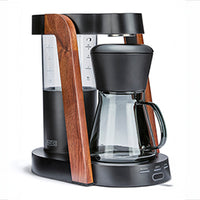 Ratio Eight S2
Ratio Eight S2
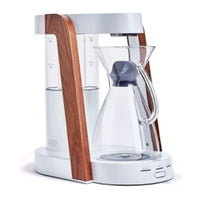 Ratio Eight Original
Ratio Eight Original
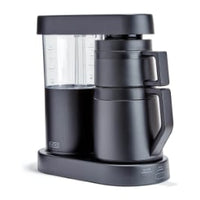 Ratio Six
Ratio Six
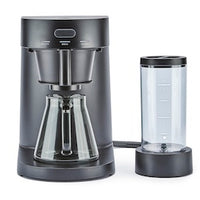 Ratio Four
Ratio Four
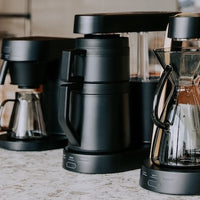 Compare Machines
Compare Machines






